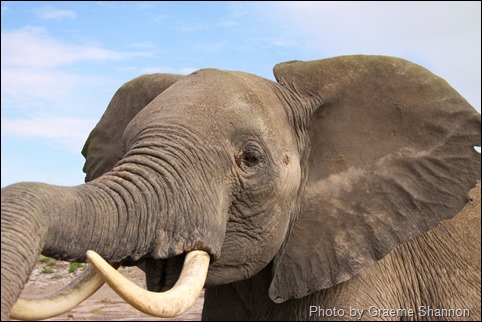The intelligence of elephants and their ability to comprehend the world around them continues to astound scientists. It was recently discovered that elephants have a specific rumble for “human” and an “alarm” for bees. And now we’re learning that the elephants living in Kenya’s Amboseli National Park can distinguish between the voices and languages of Maasai men, women, and children.
The Maasai people and elephants have a long history of interaction and conflict. They share watering holes and the Maasai raise cattle, so grazing land is in direct competition with the elephants’ natural habitat. In contrast to the Maasai, the Kamba, because of their sedentary farming lifestyle, have had far less conflict with elephants. “Different groups of humans can represent dramatically different levels of danger to animals living around them.”
“Recognizing predators and judging the level of threat they pose is a crucial skill for many wild animals,” said co-author Karen McComb of the University of Sussex. “Human predators present a particularly interesting challenge, as different groups of humans can represent dramatically different levels of danger to animals living around them.”
Over a period of two years, the scientists played recordings of Maasai and Kamba men, women, and children to forty-seven different elephant families living in Amboseli. The researches hid the speakers and played recordings of the humans saying, “Look, look over there: a group of elephants is coming.”
“The elephants can’t predict where the people are going to be because they range over these large areas, grazing their cattle,” said co-author Graeme Shannon of Colorado State University. “So the threat is both spatially and temporally very variable – and so they have to respond appropriately.”
The elephants’ reaction to the recordings coincided with the threat level of the individual human speakers. When the scientists played recordings of women and boys, people who pose little threat to the elephants, the elephants just continued to go about their business. But they reacted to recordings of Maasai men, who do regularly pose a threat to elephants, with great fervor and precision. The matriarch would immediately indicate the “alarm” and the elephants would quickly defensively huddle to protect the calves.
“She instantly retreats,” said Dr. Shannon. “But it’s a silent retreat. They sometimes make a low rumble, and may smell for him, too, but they’re already leaving and bunching up into a defensive formation. It’s a very different response from when they hear lions.” “They tell the two languages apart, and they are not fooled by digital manipulation of the voice.”
The scientists even tried to trick the elephants by slowing down and speeding up the recordings. This did not confuse the elephants at all. Dr. Shannon even mistakenly hit “shuffle” once and the song “Money for Nothing” by Dire Straits began blaring out of the speakers. No response. “They didn’t care at all,” Dr. Shannon said. “They took a look at the speaker and wandered off.”
“It’s not so much that they can tell male from female voices, but that they tell the two languages apart,” said Dr. Frans de Waal of Emory University, who did not participate in the study. “And they are not fooled by digital manipulation of the voice, which suggests that they use different gender cues than we do – or probably do.”
The stiff competition for food, water and space makes it vitally important for elephants to be able to distinguish between various threats levels. Constantly having to flee uses energy, causes stress, and takes away from grazing time, so knowing whether it is a Maasai adult man, a Maasai woman, a lion, or a Kamba farmer can mean life or death for any member of the matriarch elephant’s family.
“The elephants’ decision-making is very precise,” Dr. McComb said. “And it illustrates how they’ve adapted where they can to coexist with us. They’d rather run away than tangle with a human predator.”
